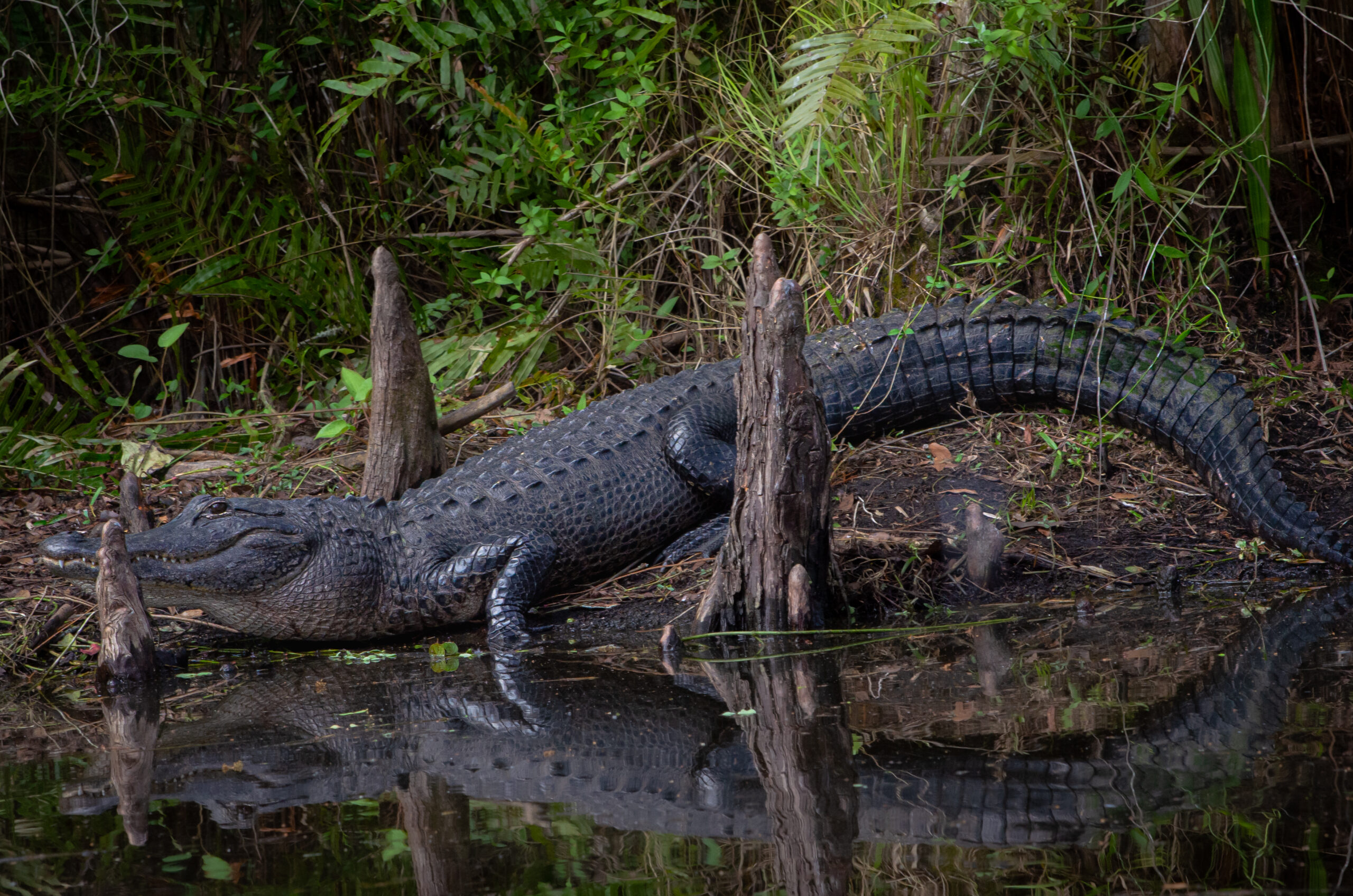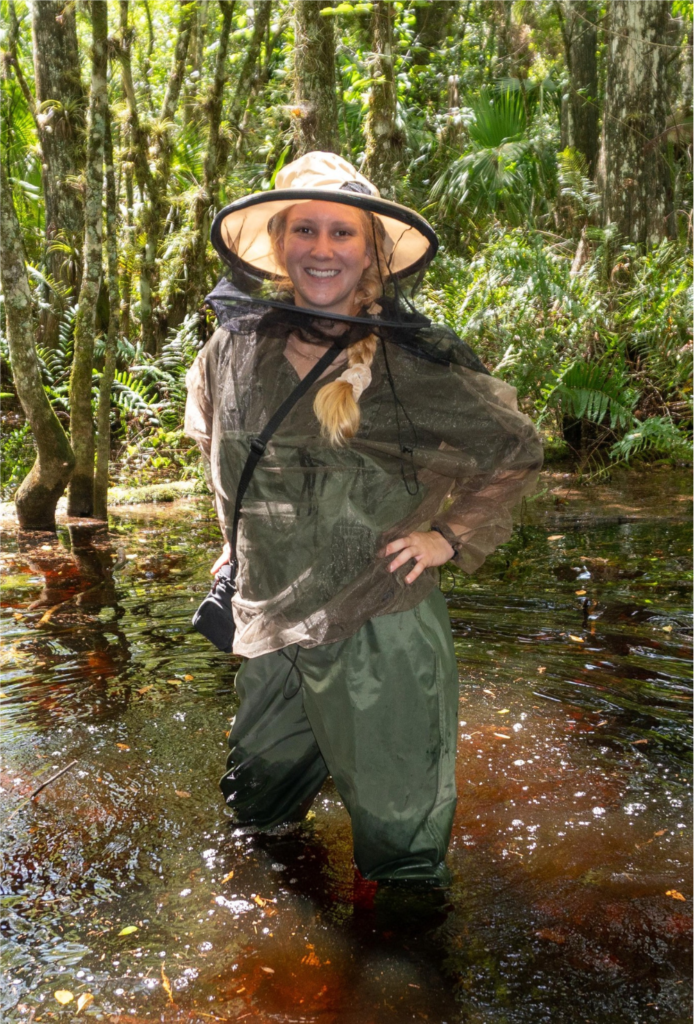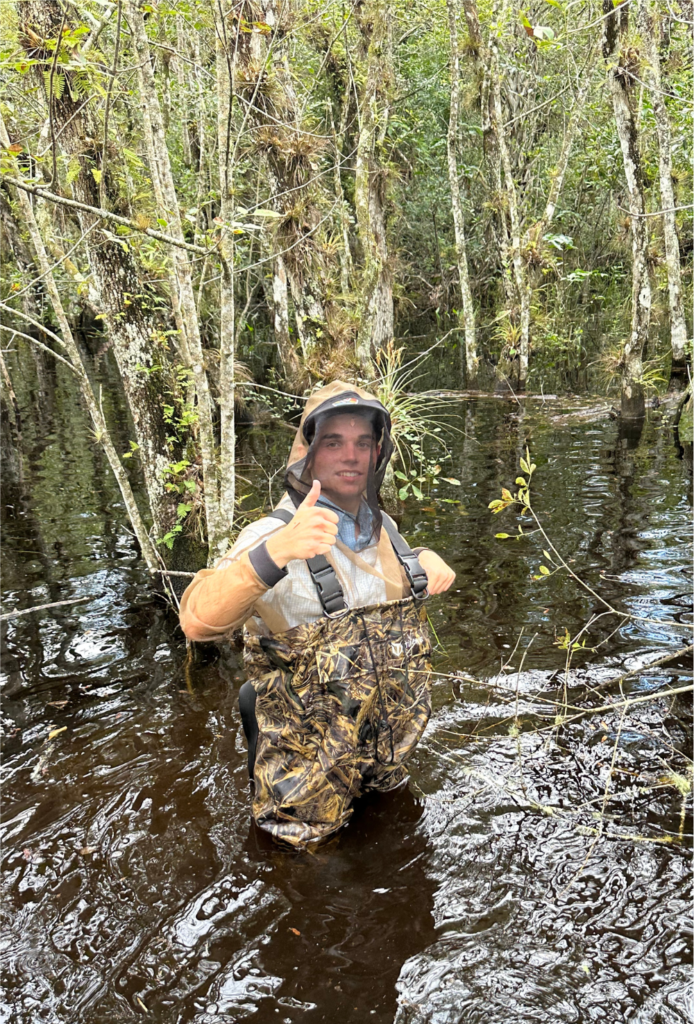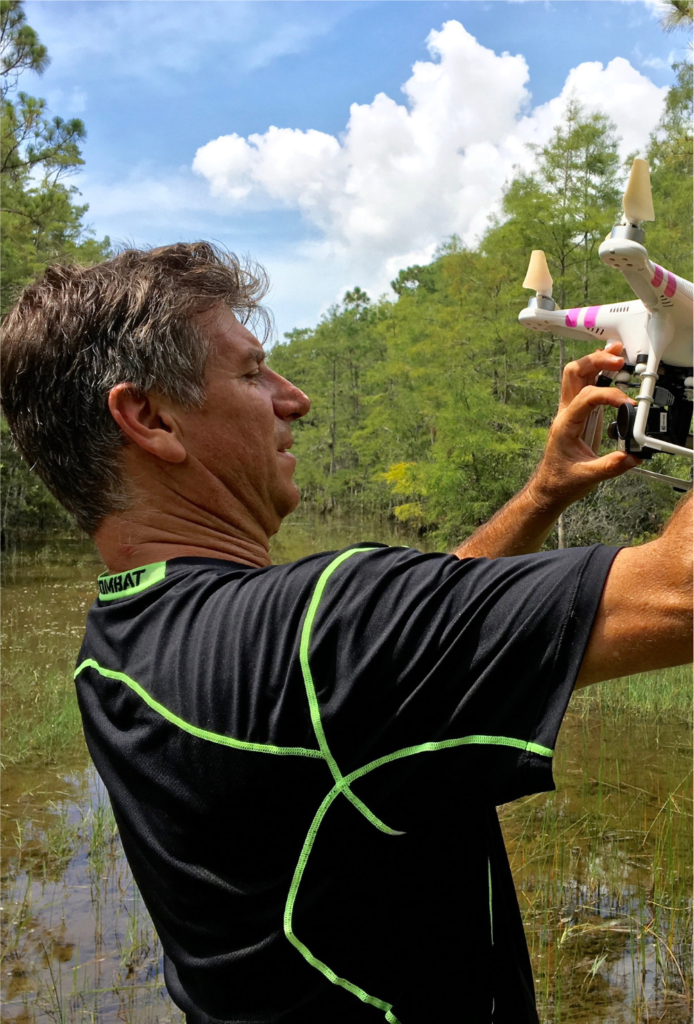Species: American Alligator
(Alligator mississippiensis)
Status: Native
Alligators have inhabited Florida’s marshes, swamps, rivers and lakes for many centuries and are found in all 67 counties. While most reptiles have 3-chambered hearts, the alligator has 4 chambers, a trait shared with mammals and birds.
Geographic Range and Habitat:
American alligators are found throughout the southeast United States from Texas to North Carolina as well as southwest Oklahoma and southern Arkansas. Their range is often limited by temperature, as they are cold-blooded animals. American alligators tend to prefer freshwater wetlands, but may be found using brackish water or even saltwater for short periods. Habitat selection in southern Florida is mostly driven by food availability, water levels, and some degree of vegetative cover (such as sawgrass or other woody vegetation). American alligators are found throughout the state of Florida including all areas comprising the Florida Everglades. American alligators are overall a species of least concern; however, they are state and federally-listed as threatened due to their similar appearance to the endangered American Crocodile. They are most at risk of habitat loss due to rising salinity levels and localized droughts.
Appearance:
American alligators are large-bodied brown/grey reptiles typically between 6 to 14 feet in length in Florida. American alligators have large, broad heads with a rounded nose and a long powerful tail. The back is lined with bony osteoderms embedded under the skin similar to an armored suit. These osteoderms are covered with keratinous scutes, giving the characteristic bumpy appearance along the back and ridge of the tail. Adults typically weight between 200-500 pounds; however older individuals can weigh up to nearly 1,000 pounds!
Diet:
American alligators will eat just about anything tied to the water, but primarily prey upon fish, turtles, snakes, and snails. They may also consume occasional mammals that come near the water’s edge, as well as wading birds and even other crocodilians. Juvenile American alligators primarily consume insects, small fish, and amphibians.
Behavior:
American alligators are generally slow-moving on land, but strong tails propel them quickly through water. They tend to spend most of their time in the water and will occasional bask on land for warmth. American alligators hunt primarily at dusk and at night. Homes ranges in southern Florida are reported to be around 1-14 mi2, and individuals often exhibit high site fidelity, meaning they usually stay within a core area. American alligators are relatively well-known for their incredible homing ability; to return to their original habitat after being translocated. American alligators are typically not associated with aggressive behavior, however they should not be disturbed or harassed, and under no circumstances should be feed (whether intentionally or while fishing). Males may become more territorial during the breeding season, and females will often protect their nests and newly-hatched young. For more information on living with crocodilians, or to report a nuisance animal, visit: https://myfwc.com/conservation/you-conserve/wildlife/gators/
Reproduction:
American alligators are often sexually mature at a size of around 6-7 feet. For females this may take 10-15 years, and around 8-12 years for males. The mating season is from April to June, where males will perform courtship bellowing, and females will construct nests. Nesting mounds are constructed of soil or sand, vegetation, and other debris, where they will lay 32-46 large, slightly oblong eggs buried within. The incubation period is around 63-68 days, with hatching beginning around August through September. Crocodilian sex is determined by nest temperature, where warmer temperatures produce more males and cooler temperatures produce more females (Note: this is the opposite for sea turtles). American alligator mothers will monitor the nest closely until the young begin to hatch, which is triggered by a distinct hatchling call. Mothers will then dig through the nest and transport offspring to water, a process necessary for hatchling survival. Mothers may protect their young more vigorously in the first few weeks after hatching, but offspring may stay in the vicinity of their mothers for a year or more. Hatchling survival is relatively low, meaning that only around 12-13% of the clutch will reach sexual maturity.
Active research:
Recent:
- (2021) Hierarchical models improve the use of alligator abundance as an indicator: https://www.sciencedirect.com/science/article/pii/S1470160X21010712
Ongoing:
- The University of Florida’s “Croc Docs” are a team of biologists that monitor crocodilians and invasive reptiles of the Everglades. They are the predominate resource for ongoing research on American alligators in southern Florida. Read more about their work here: https://crocdoc.ifas.ufl.edu/
Alligator Facts:
Did you know?
- The southern Everglades ecosystem is the only place on the planet where alligators and crocodiles coexist.
- American alligators are living fossils; they have been around for 200 million years!
- American alligators have a life span of 30-50 years. After they are 6-7 feet long, alligators are safe from predators except humans, occasionally other alligators, and Florida panthers.
- Alligators have no vocal cords, but males are able to bellow loudly by sucking air into their lungs. This loud intermittent roar is used to attract mates and warn off other males.
- As an alligator’s teeth are worn down, they are replaced. An alligator can go through 3,000 teeth in a lifetime.
- The sex of the juveniles is determined by the temperature of the eggs. Temperatures of 31 C (87.8 F) or below produce females, 32 C (89.6 F) produces 75 percent males and 32.5 C (90.5 F) and above are mostly females.
- They can swim, walk, run, and even crawl. Unlike most reptiles, alligators walk with their legs directly beneath them, as opposed to diagonal. This allows them to lift their tails off of the ground while they move.
Taxonomy
- Kingdom – Animalia
- Phylum – Chordata
- Class – Reptilia
- Order – Crocodilia
- Family – Alligatoridae
- Genus – Alligator
- Species – Alligator mississipiensis
Species Status:
- Native
Listing Status
- Federal Status – Threatened (*Due to similarity of appearance)
- FL Status – Threatened (*Due to similarity of appearance)












